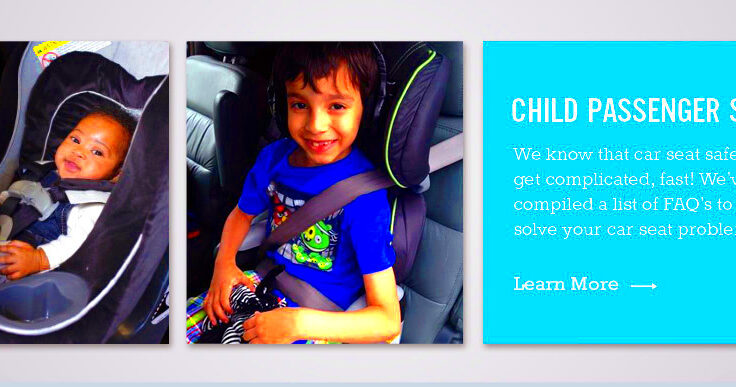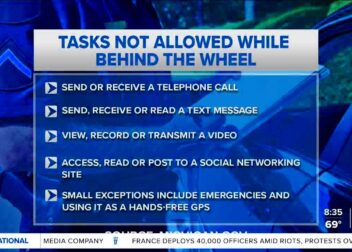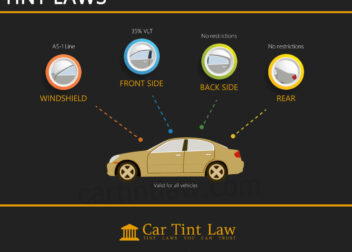Connecticut’s Child Passenger Safety Laws
When it comes to driving with kids in the car parents carry the burden of responsibility. In Connecticut there are laws in place to safeguard our little ones on the road. These regulations aim to protect the most defenseless passengers in our vehicles rather than just adhering to rules. As a fellow parent I empathize with the difficulties of balancing these regulations while ensuring our children stay cozy and safe. Let’s explore why Connecticut’s child passenger safety laws are vital for every family.
Requirements for Car Seats Based on Age
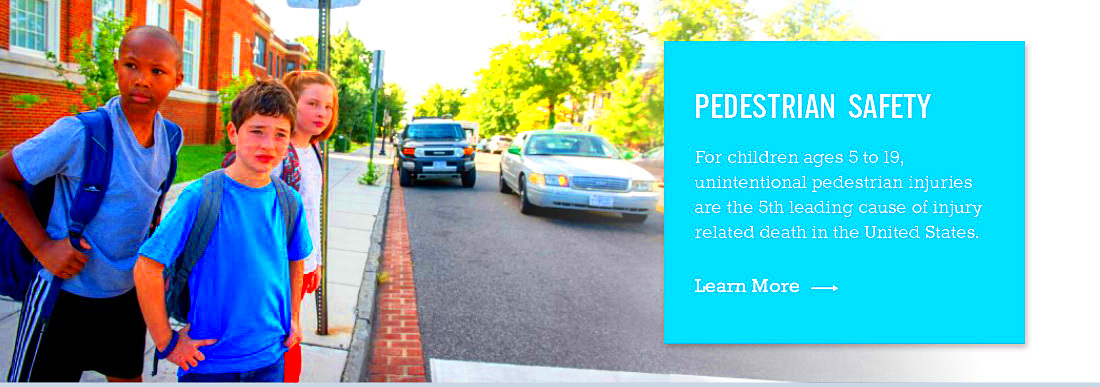
In Connecticut the car seat regulations are clear cut and crucial for ensuring your childs safety. Lets take a look at the requirements based on your childs age.
- Infants (up to 2 years old): Infants must be secured in a rear-facing car seat. This position is the safest for their fragile neck and spine.
- Children (2 to 4 years old): Once your child outgrows the rear-facing seat, they should transition to a forward-facing car seat with a harness system.
- Children (4 to 8 years old): Children should use a booster seat until they are at least 8 years old or reach 57 inches in height. The booster seat helps ensure that the vehicle’s seatbelt fits properly.
- Children (over 8 years old): Once your child exceeds the height and age requirements for a booster seat, they can use a seatbelt alone, but it must fit them correctly. The lap belt should lie across the upper thighs, not the stomach, and the shoulder belt should cross the chest, not the neck.
Types of Car Seats and Their Usage
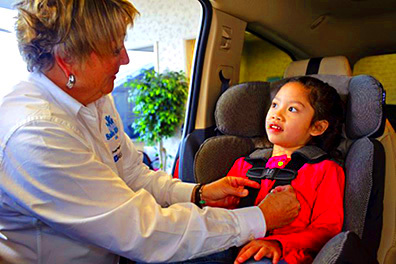
Selecting an appropriate car seat goes beyond legal requirements; it is crucial for ensuring safety. Car seats are specifically designed to cater to various stages of your childs development. Here’s a breakdown to help you navigate through these choices.
- Rear-Facing Car Seats: Ideal for infants and toddlers, these seats provide the best protection in a crash. They should be used as long as possible, according to the seat’s weight and height limits.
- Convertible Car Seats: These versatile seats can be used both rear-facing and forward-facing. They are a great investment because they adapt as your child grows.
- Forward-Facing Car Seats: Once your child outgrows the rear-facing car seat, a forward-facing car seat with a harness system is the next step. Ensure it’s installed securely according to the manufacturer’s instructions.
- Booster Seats: For older children, booster seats lift them so that the seatbelt fits properly. It’s essential to use a booster until the vehicle’s seatbelt fits correctly on the child.
- High-Back and Backless Booster Seats: High-back boosters offer head and neck support, while backless boosters are more portable but provide less support. Both types need to be used until the seatbelt fits correctly.
Choosing the car seat as a parent can feel like a task but it’s essential for keeping your child safe during every trip. If you have any doubts don’t hesitate to check the car seat manual or contact local safety resources. Remember every step taken to protect our little ones matters.
How to Properly Install a Car Seat
Getting a car seat set up can be a bit of a challenge, but it’s really important to keep your little one safe. Having spent a lot of time making sure all the straps and buckles are just right as a parent, I have some helpful tips to make the process smoother for you.
To begin with make sure to go through the car seat manual and the manual for your vehicle. Every car seat and vehicle may have different installation guidelines. Here’s a guide to assist you with the process.
- Select the Right Location: Choose the back seat, preferably in the middle, as it is generally the safest spot in the vehicle.
- Install the Base: For infant seats, ensure the base is level. Many bases come with a level indicator to help you. If your car has an LATCH system, use it for a secure fit. Otherwise, use the vehicle’s seatbelt.
- Secure the Seat: If using the seatbelt, thread it through the correct path on the car seat and lock it. Pull the seatbelt tight to remove any slack. If using LATCH, attach the anchors to the connectors and tighten the straps.
- Check the Angle: Ensure that the car seat is at the correct angle, especially for rear-facing seats. Many seats have an adjustable base to help with this.
- Test for Movement: Once installed, the car seat should not move more than an inch in any direction when you push and pull it at the base. This ensures it’s securely attached.
Don’t forget that a correctly secured car seat is the best safeguard for your little one in case of an accident. If you have any doubts about the installation you can get your car seat checked at many nearby hospitals or fire stations to make sure everything is in order.
Legal Penalties for Non-Compliance
In Connecticut adhering to child passenger safety laws is not just a matter of doing what’s right; it’s also about steering clear of fines and consequences. Speaking from personal experience I understand how these rules can slip our minds amidst the chaos of everyday life. However here’s why it’s essential to stay in line with them;
Breaking child passenger safety laws in Connecticut can result in:
- Fines: If you’re caught not using the correct car seat or not installing it properly, you may face a fine. The cost of these fines can add up quickly and can be avoided with proper adherence to the laws.
- Points on Your Driving Record: Depending on the violation, points might be added to your driving record. Accumulating too many points can lead to increased insurance rates and, in severe cases, license suspension.
- Increased Risk: Beyond legal repercussions, not using the correct car seat puts your child at greater risk in the event of an accident. The primary purpose of these laws is to protect our most precious passengers.
When you make sure that your car seat is set up properly and used in line with the law you’re not just steering clear of fines; you’re pledging to keep your child safe. It may seem like a task but it brings a lot of reassurance.
Exceptions and Special Considerations
Not every situation can be neatly categorized according to a predetermined set of guidelines and Connecticuts child passenger safety regulations recognize this fact. Based on my own experiences I understand that there are times when exceptions are essential. Lets explore some of these unique circumstances.
- Medical Conditions: If your child has specific medical needs that require a different car seat setup, you might need a special arrangement. Consulting with a healthcare provider or a child passenger safety technician can help you navigate these needs.
- Car Models: Some vehicles have unique seatbelt configurations or issues with the LATCH system. If your car seat does not fit properly in your vehicle, you might need to use a different model or seek professional advice.
- Extended Use of Booster Seats: While the law mandates booster seats until age 8 or 57 inches, some children may need to use them longer for proper seatbelt fit. Always ensure that the seatbelt crosses the child’s shoulder and lap correctly.
These rules and factors are in place to cater to the varying requirements of families and prioritize the safety of every child. If you encounter a circumstance seeking advice from safety professionals can offer personalized assistance and support.
Recent Changes in the Law
Staying updated on legal changes can be quite a challenge, particularly when it comes to safeguarding our children. I recall a few years back how difficult it was for me to stay informed about car seat law updates while managing the responsibilities of parenting. Recently Connecticut has introduced noteworthy revisions to its child passenger safety laws demonstrating an increasing awareness of child safety in vehicles.
Here’s a summary of the recent changes:
- Increased Age Requirements: The age at which children can transition from a booster seat to a regular seatbelt has been raised. Children must now use a booster seat until they are at least 8 years old or reach 57 inches in height, whichever comes first. This change aims to ensure that children are better protected until they are physically ready for a seatbelt alone.
- Enhanced Safety Standards: New car seat models are now required to meet stricter safety standards. This includes improved side-impact protection and better restraint systems. The goal is to provide greater safety in the event of a collision.
- Revised Installation Guidelines: The law has also updated guidelines on how car seats should be installed. There is now a greater emphasis on using the LATCH system and ensuring that car seats are correctly secured with either LATCH or seat belts. This reflects growing evidence about the effectiveness of these installation methods.
Keeping up with these changes can be tough, but it’s crucial for ensuring the safety of our kids. By frequently checking reliable sources for updates and seeking advice from child safety professionals you can stay well informed about these significant developments.
Resources for Parents and Caregivers
As a parent who’s dealt with the complexities of car seat rules I understand how challenging it can be to come across reliable information. Thankfully there are plenty of resources out there to assist you in making choices regarding the safety of child passengers. Here are some helpful resources that can offer guidance and assistance.
- Local Child Passenger Safety Clinics: Many communities offer free car seat checks and installations. These clinics can be a great way to ensure that your car seat is properly installed and meets current safety standards.
- Connecticut Department of Transportation: The state’s DOT website provides detailed information about car seat laws, including the latest updates and guidelines. It’s a reliable source for understanding state-specific requirements.
- National Highway Traffic Safety Administration (NHTSA): The NHTSA website offers comprehensive resources on car seat safety, including installation guides, safety tips, and videos. They also have a tool to help you find the right car seat based on your child’s age and size.
- Local Pediatricians and Child Safety Experts: Your child’s pediatrician can offer personalized advice on car seat safety based on your child’s unique needs. Many pediatricians are also trained to help with car seat installation and usage.
- Parenting Forums and Support Groups: Online forums and local parenting groups can be valuable for sharing experiences and tips. Connecting with other parents can provide practical advice and emotional support.
These tools can assist you in navigating the intricacies of car seat safety and making sure your child is well safeguarded during journeys.
FAQ
It’s totally understandable to be curious about the laws regarding child passenger safety, given the wealth of information out there. Here are a few commonly asked questions that could help clarify some of the usual worries.
- What is the best position for a car seat in the car? The back seat, ideally in the middle, is generally considered the safest position. It provides the most protection in the event of a crash and is away from active airbags.
- How can I tell if my car seat is installed correctly? The car seat should not move more than an inch from side to side or front to back when you tug at the base. If you’re unsure, consider having a certified technician check the installation.
- When can my child transition from a rear-facing to a forward-facing car seat? According to Connecticut law, your child should remain in a rear-facing car seat until they are at least 2 years old or reach the maximum height and weight limits of the seat. Always follow the car seat manufacturer’s recommendations.
- What should I do if my car seat doesn’t fit well in my vehicle? If you encounter issues with installation, consult the car seat manufacturer or seek help from a certified car seat technician. Sometimes, trying a different car seat model or adjusting the vehicle seat can resolve fit issues.
- Are there any special considerations for children with disabilities? Yes, children with specific medical needs may require special car seat arrangements. Consult with a healthcare provider or a child passenger safety technician for tailored advice and solutions.
This section aims to address questions and provide guidance on ensuring your childs safety. If you have any uncertainties or inquiries feel free to seek professional counsel.
Conclusion
In concluding our conversation about Connecticut’s child passenger safety laws it’s evident that these rules go beyond mere regulations; they are essential precautions aimed at keeping our children secure on the road. As a parent who has dealt with the intricacies of car seat laws I can personally attest to the comfort that comes from knowing your child is safe. Following these laws not only helps you steer clear of troubles but more importantly ensures that your little ones are shielded in case of an accident. Keep in mind that the effort involved in installing a car seat properly or staying informed about the latest regulations is a significant step towards protecting your child’s future. By staying updated and using resources at your disposal you’re truly making a difference, in your child’s safety journey. Let’s keep prioritizing their well being, with the same commitment and attention that we give to every other aspect of their lives.
